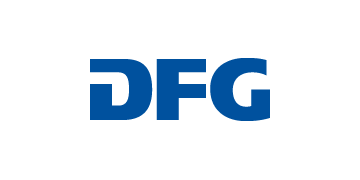| Theme | Tool- and Mold-Making, Forming technology, Artificial Intelligence, Process design |
|---|---|
| Project title | Design of optimal pre-form stages of forging parts using stochastic optimization methods (Vorformoptimierung Transferprojekt) |
| Project duration | 01.01.2015 – 31.05.2016 |
| Video | |
| Download | |
| Press release |
Currently most forging process chains are developed in iterative processes, which is time consuming and uneconomic. Thus engineering research has focused on preforming optimization. In this project, a new approach has been developed regarding special genetic algorithms in preforming optimization processes. A method is shown to divide a forging part in multiple modules, each described with characteristic properties which will enable a preforming optimization on a modular basis. The modularization contributes to the calculation of the minimum amount of flash needed for the final part geometry. The method widens the field of application for automated preforming optimization as with the use of modules any long flat forging part can be described and optimized. Using this new method the preforming optimization with several iteration loops can be achieved within hours instead of weeks. The preforming optimization method reduces development costs significantly and provides the possibility to fasten the process development for forging processes.
Publications about the project
To this day, the design of preforms for hot forging processes is still a manual trial and error process and therefore time consuming. Furthermore, its quality vastly depends on the engineer’s experience. At the same time, the preform is the most influencing stage for the final forging result. To overcome the dependency on the engineer’s experience and time-consuming optimization processes this paper presents and evaluates a preform optimization by an algorithm for cross wedge rolled preforms. This algorithm takes the mass distribution of the final part, the preform volume, the shape complexity, the appearance of folds in the final part and the occurring amount of flash into account. This forms a multi-criteria optimization problem resulting in large search spaces. Therefore, an evolutionary algorithm is introduced. The developed algorithm is tested with the help of a connecting rod to estimate the influence of the algorithm parameters. It is found that the developed algorithm is capable of creating a suitable preform for the given criteria in less than a minute. Furthermore, two of the five given algorithm parameters, the selection pressure und the population size, have significant influence on the optimization duration and quality.
preform optimization, genetic algorithm, cross wedge rolled, adaptive flash
The preform design of forging processes mainly influences the economics of a multistage forging process and is very time consuming. This thesis presents an automated approach for preform design, aiming to reduce the development effort for multistage forging processes. Therefore analytical equations are derived to describe the quality of preforms. The equations take into account all main quality (formfilling, folds) and economic parameters (amount of flash, forming force, manufacturing expenses) for preforms.
To solve the multicriteria optimization problem an evolutionary algorithm is used. The results show that it is possible to obtain a suitable preform by using the algorithm in less than 60 seconds. Furthermore a method to reduce the amount of flash for cross wedge rolled preforms is developed in this thesis. Based on an equation describing the minimum required amount of flash in each area of the final part an optimized mass pre-distribution is achieved. Compared to conventional preforms a flash reduction of 66 % is reached.
bulk forming, evolutionary algorithm, preform optimization, flash reduction
In multistage hot forging processes, the preform shape is the parameter mainly influencing the final forging result. Nevertheless, the design of multistage hot forging processes is still a trial and error process and, therefore, time consuming. The quality of developed forging sequences strongly depends on the engineer’s experience. To overcome these obstacles this paper presents an algorithm for solving the multi-objective optimization problem in designing preforms. Cross wedge rolled preforms were chosen as subject of investigation. An evolutionary algorithm is introduced to optimize the preform shape taking into account the mass distribution of the final part, the preform volume and the shape complexity. A crucial factor in preform optimization for hot forging processes is the amount of flash. Therefore, an equation for improving the amount of flash is derived. The developed algorithm is tested using two connecting rods with different shape complexities as demonstration parts.
preform optimization, forging, evolutionary algorithms, cross wedge rolling
In multistage hot forging processes, the preform shape is the parameter mainly influencing the final forging result. Nevertheless, the design of multistage hot forging processes is still a trial and error process and therefore time-consuming. The quality of developed forging sequences strongly depends on the engineer's experience. To overcome these obstacles, this paper presents an algorithm for solving the multi-objective optimization problem when designing preforms. Cross wedge rolled (CWR) preforms were chosen as subject of investigation. An evolutionary algorithm is introduced to optimize the preform shape taking into account the mass distribution of the final part, the preform volume and the shape complexity. The developed algorithm is tested using a connecting rod as a demonstration part. Based on finite element analysis, the implemented fitness function is evaluated, and thus the progressive optimization can be traced.
preforming optimization, hot forging, evolutionary algorithms, cross wedge rolling
The future belongs to forging preforms that are designed automatically: IPH is presently working on a software programme based on evolutionary algorithms, allowing companies to save valuable development time and improve the efficiency of forging processes.
forming technology, forging, preform, evolutionary algorithms
An artificial neural network is developed to predict the form filling in forging sequences. This model uses various cross sectional area properties to improve the form filling prediction and to estimate simulation results. The effect of different cross sectional area properties on the prediction quality of the form filling is shown and the best way to predict the form filling is chosen.
FEA, forging, preform optimization








